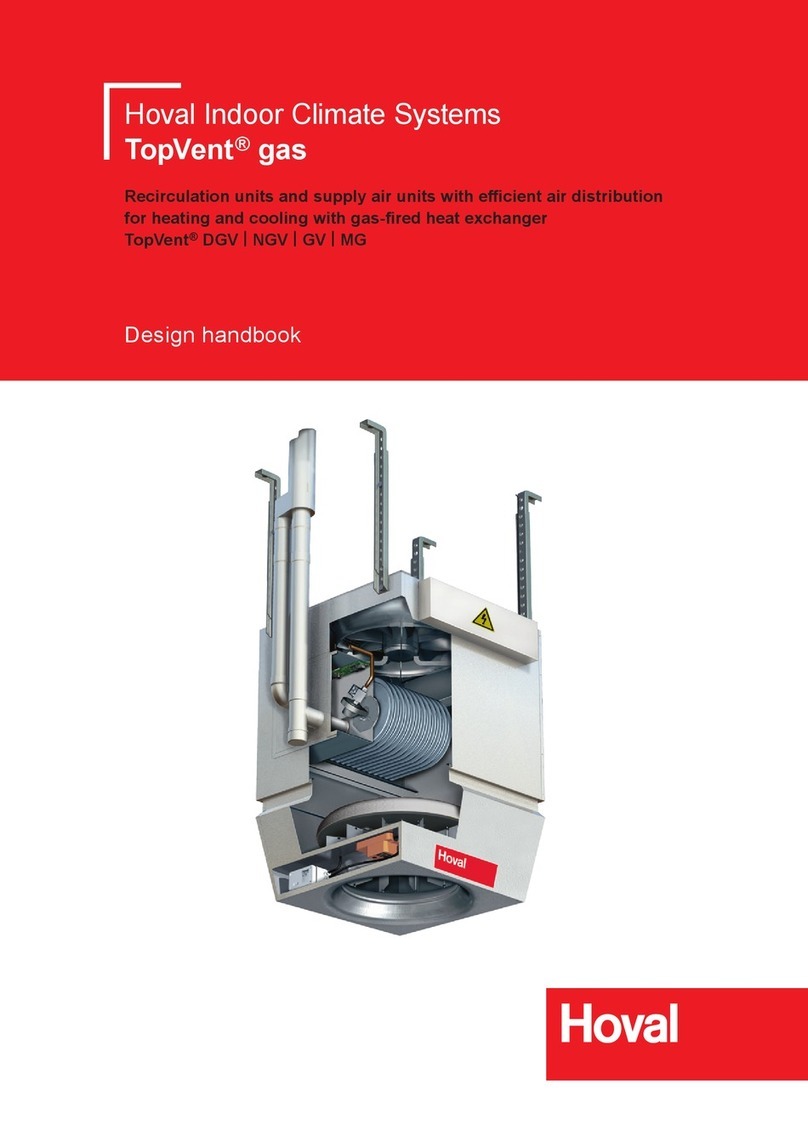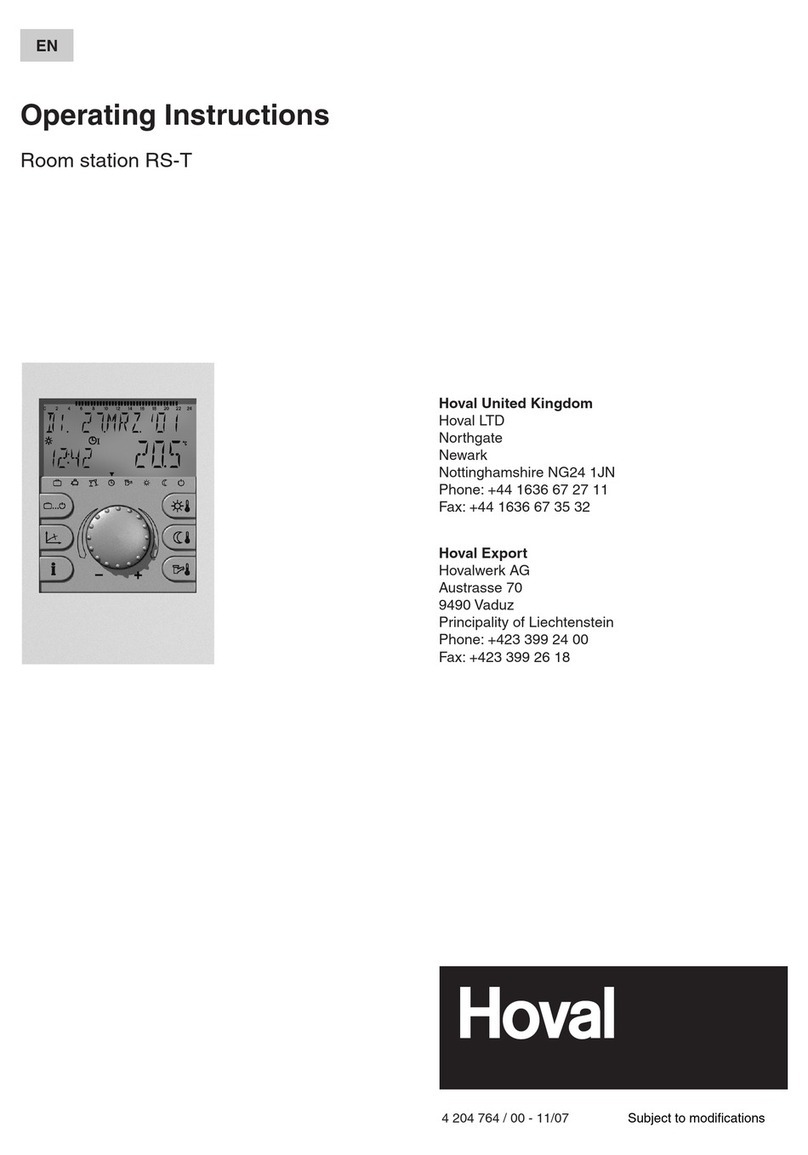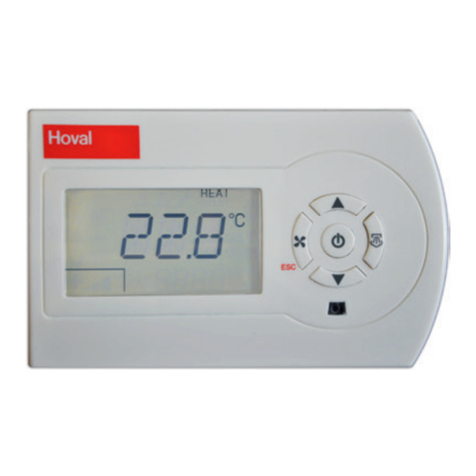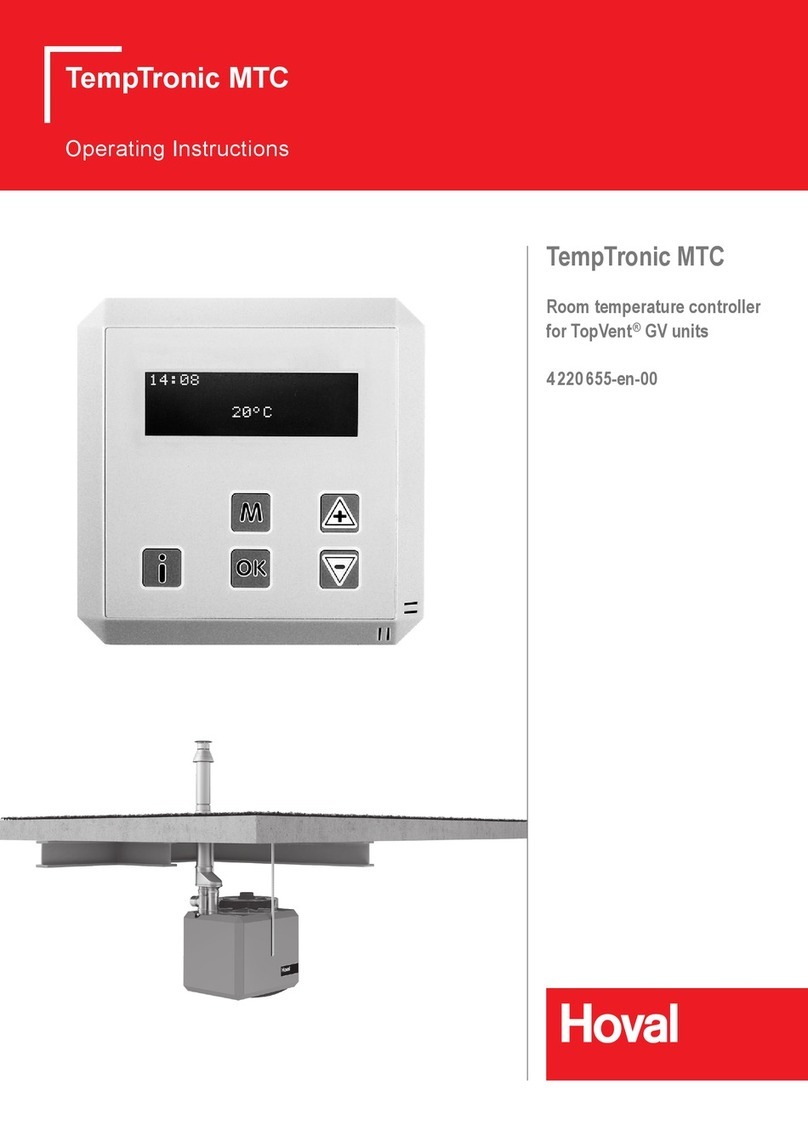
3.4 Operating modes
The TopVent®TP has the following operating modes:
■Recirculation
■Recirculation speed 1
■Standby
The TopTronic®C control system regulates these operating modes automatically
for each control zone in accordance with the specifications in the calendar. The
following points also apply:
■The operating mode of a control zone can be switched over manually.
■Each TopVent®unit can operate individually in a local operating mode:
Off, Recirculation, Recirculation speed 1, Forced heating.
Code Operating mode Description
REC Recirculation
On/Off operation: during heat or cool demand, the unit draws in
room air, heats or cools it and blows it back into the room. The room
temperature set value day is active.
Fan .................................. speed 1 / 2 1)
Heating/cooling ................ on 1)
1) Depending on heat or cool demand
DES ■Destratification:
To avoid heat build-up under the ceiling, it may be appropriate
to switch on the fan when there is no heat or cool demand
(either in permanent operation or in on/off operation depending
on the temperature stratification, as desired).
Fan .................................. speed 2
Heating/cooling ................ off
REC1 Recirculation speed 1
The same as REC, but the unit operates only at speed 1
(low air flow rate)
Fan .................................. speed 1
Heating/cooling ................ on 1)
1) Depending on heat or cool demand
DES ■Destratification:
The same as for REC, but the unit operates only at speed 1
Fan .................................. speed 1
Heating/cooling ................ off
ST Standby
The unit is ready for operation. The following operating modes are
activated if required:
CPR ■Cooling protection:
If the room temperature drops below the set value for cooling
protection, the unit heats up the room in recirculation operation.
Fan .................................. speed 2
Heating ............................ on
OPR ■Overheating protection:
If the room temperature rises above the set value for over-
heating protection, the unit cools down the room in recirculation
operation.
Fan .................................. speed 2
Cooling............................. on
L_OFF Off (local operating mode)
The unit is switched off.
Fan .................................. off
Heating/cooling ................ off
–Forced heating (only for units with supplementary heater)
The unit draws in room air, warms it and blows it back into the room.
Forced heating is activated by connecting the unit to a power supply
(only if there is no bus connection to the zone controller). For
example, it is suitable for heating the hall before taking the control
system into operation or if the controller fails during the heating
period.
Fan .................................. speed 2
Heating ............................ on
Table 5: TopVent®TP operating modes
10
TopVent ®TP
Construction and operation
4 218 024-en-04
































